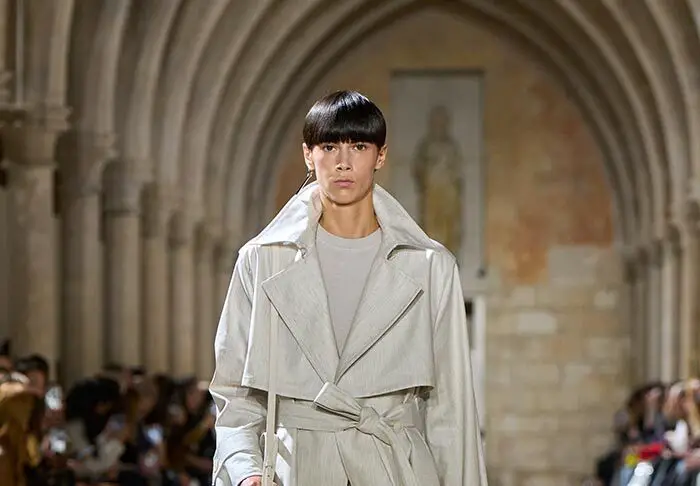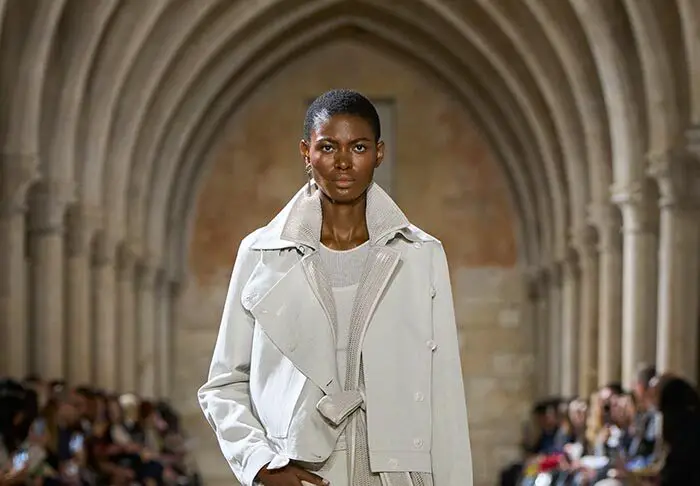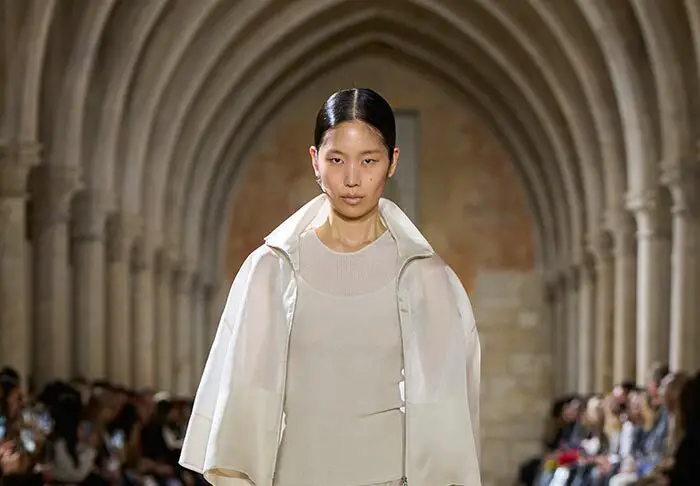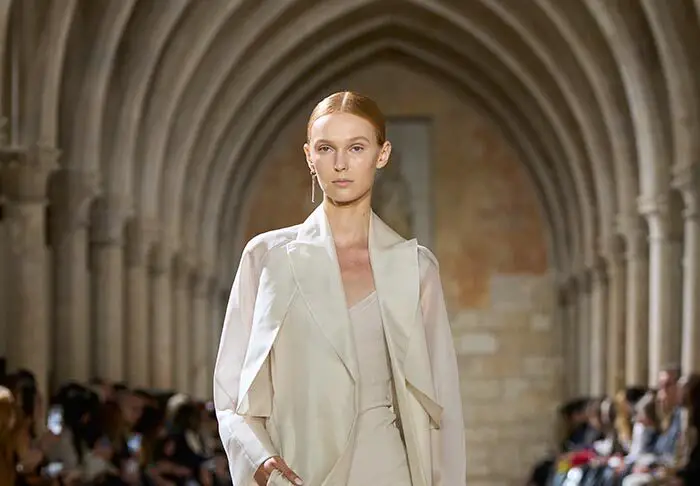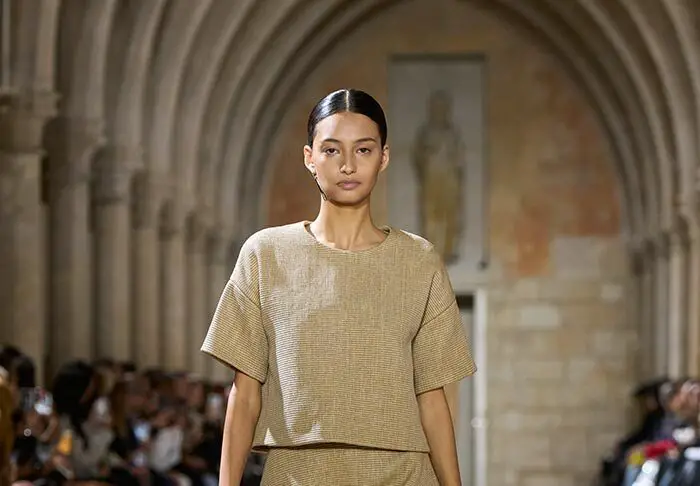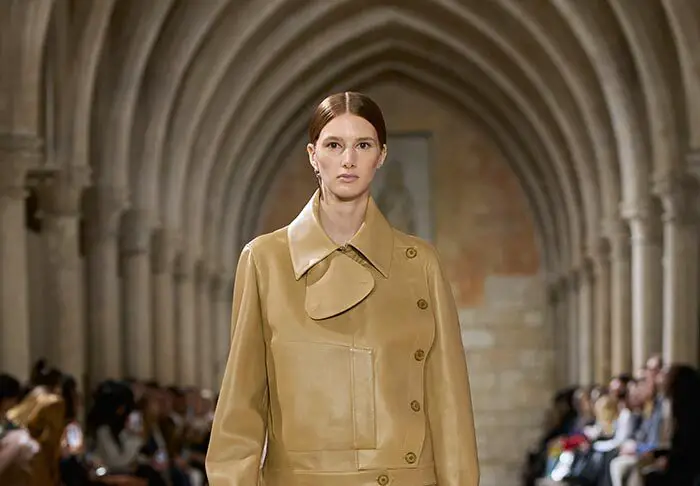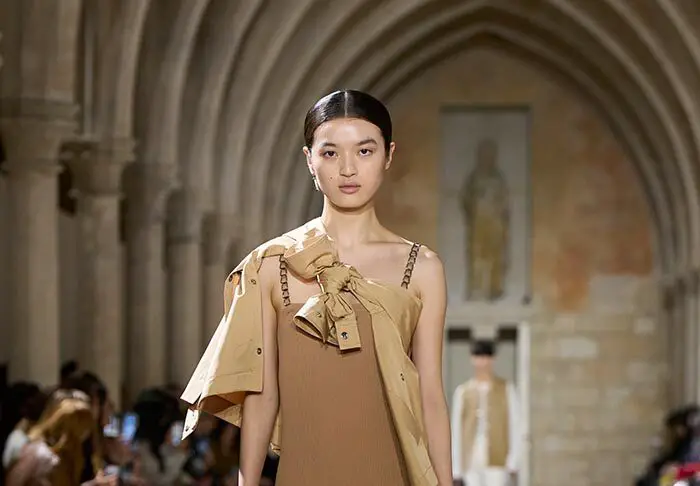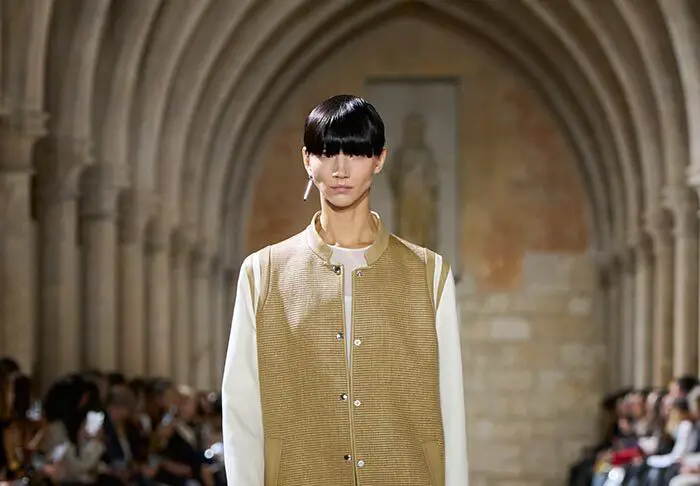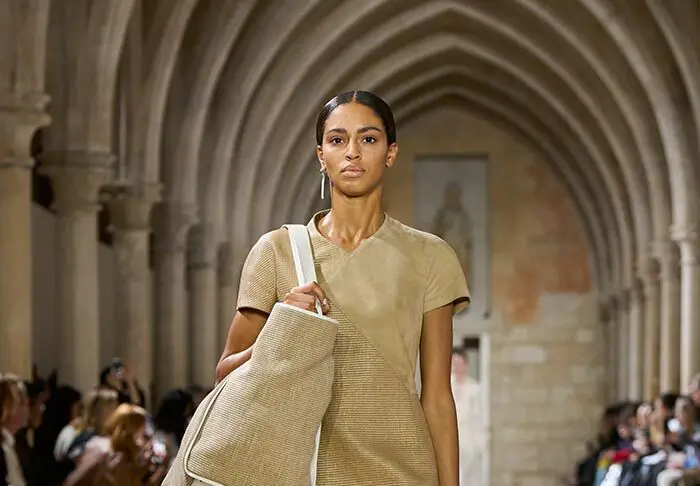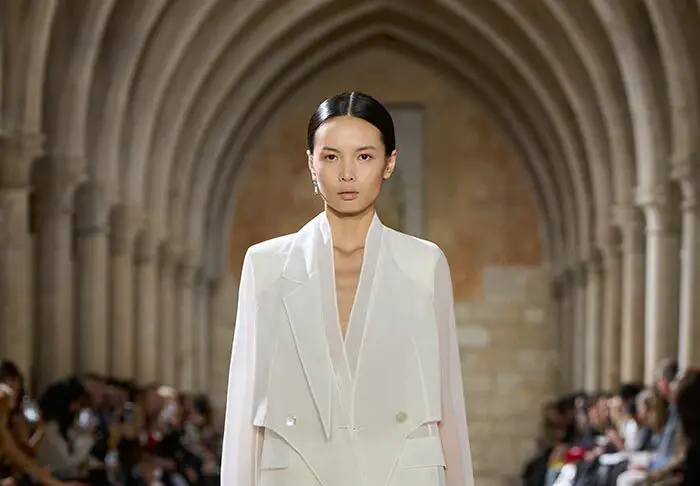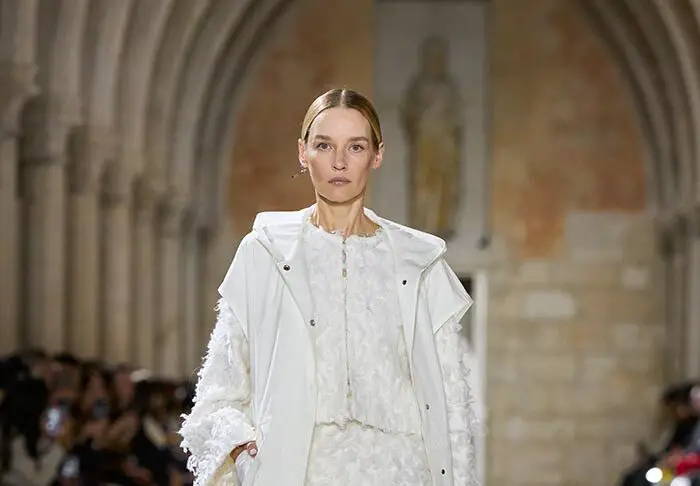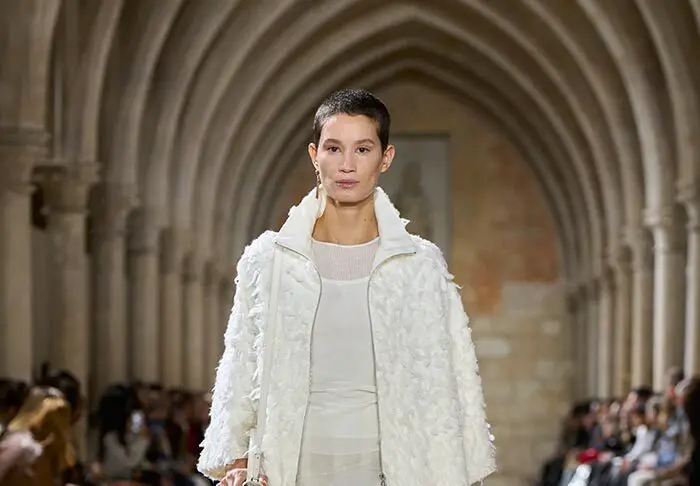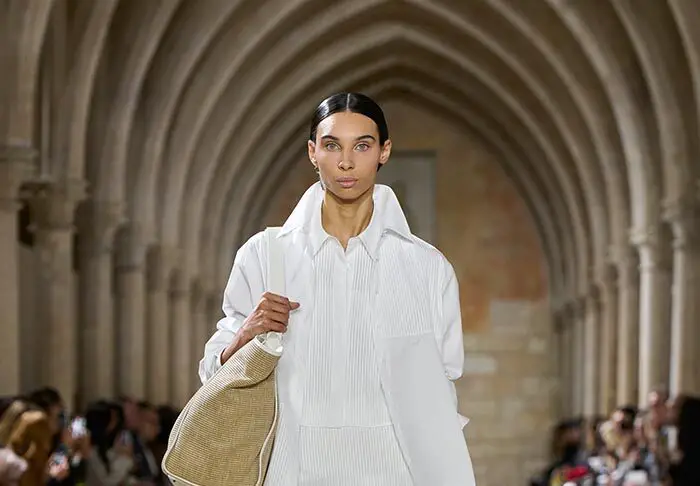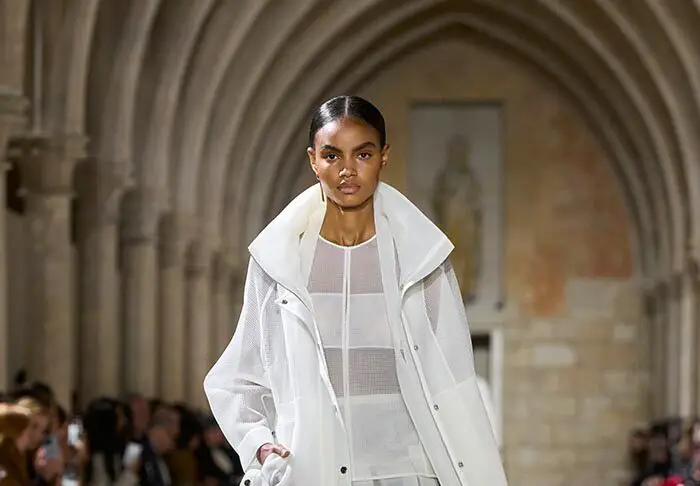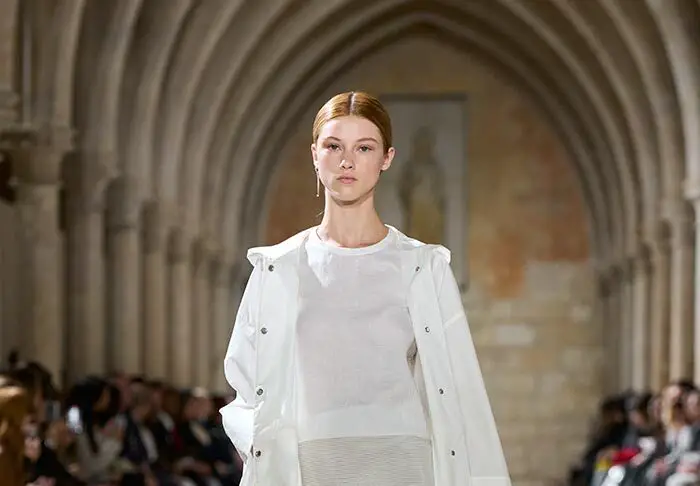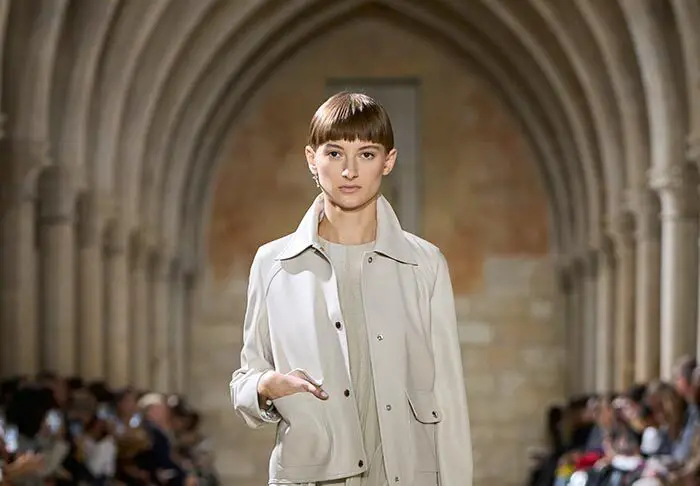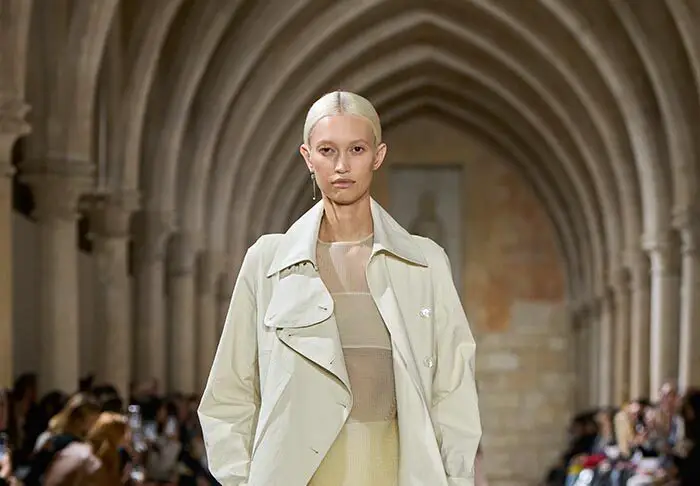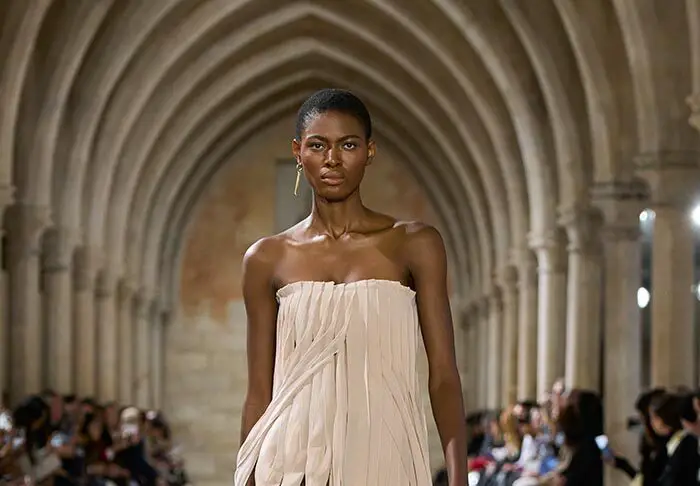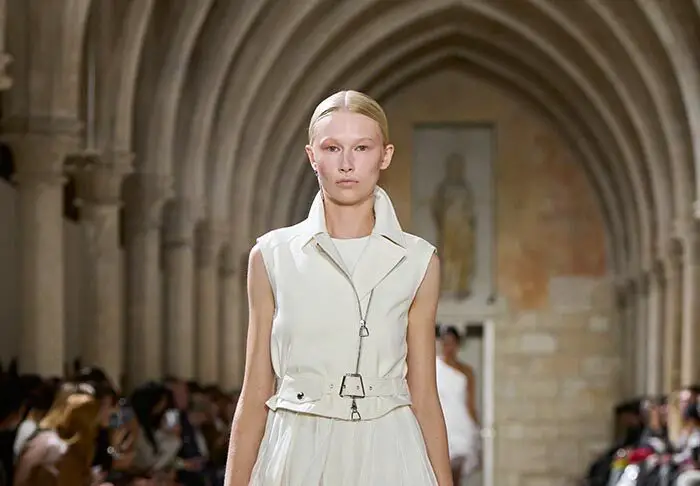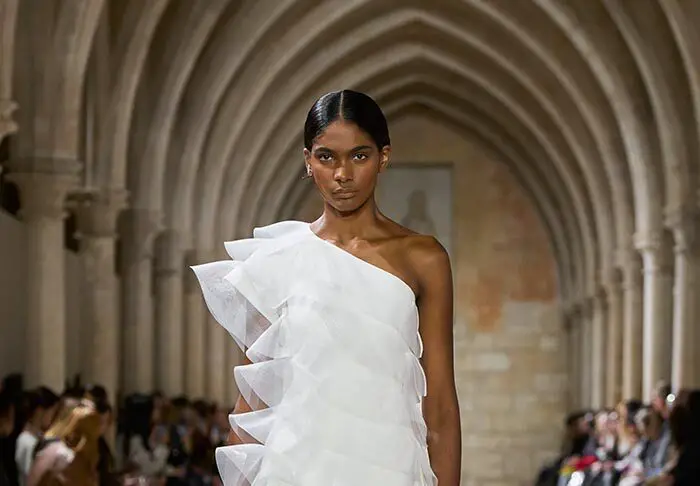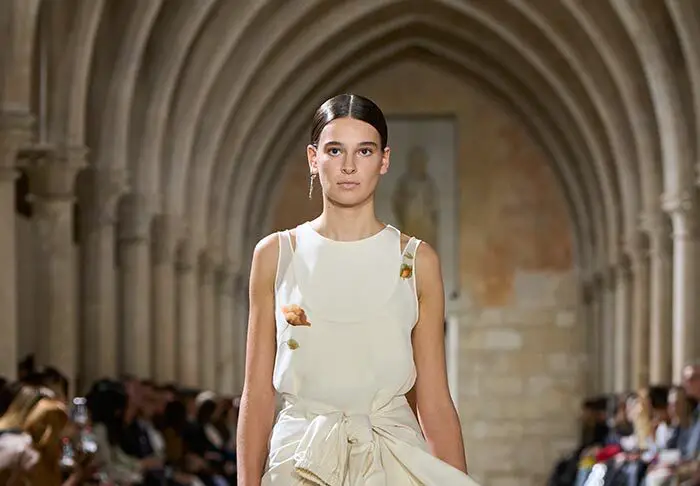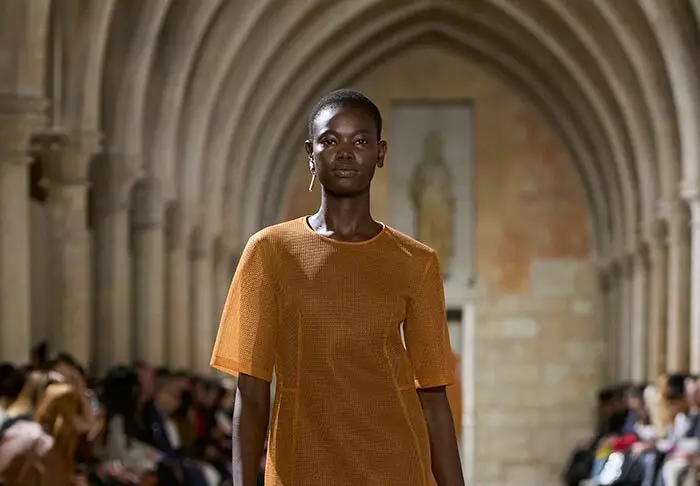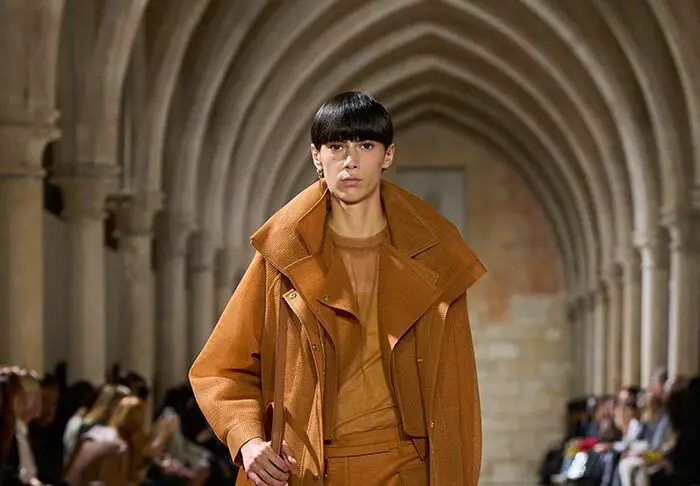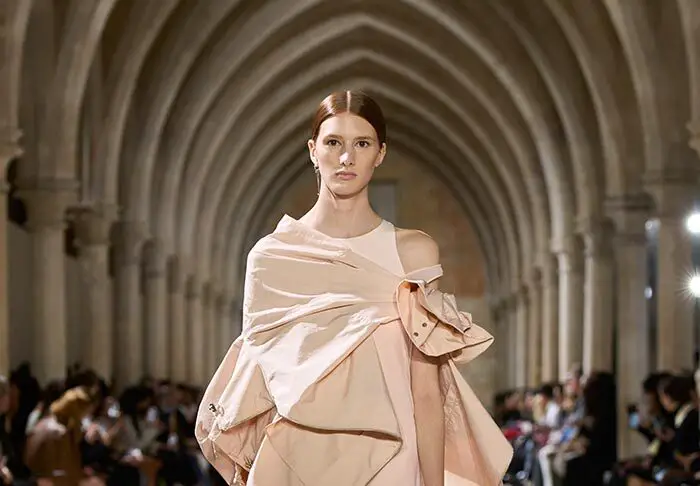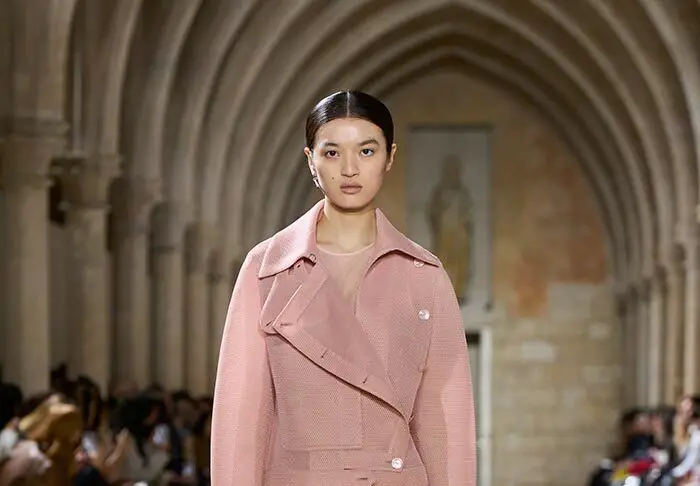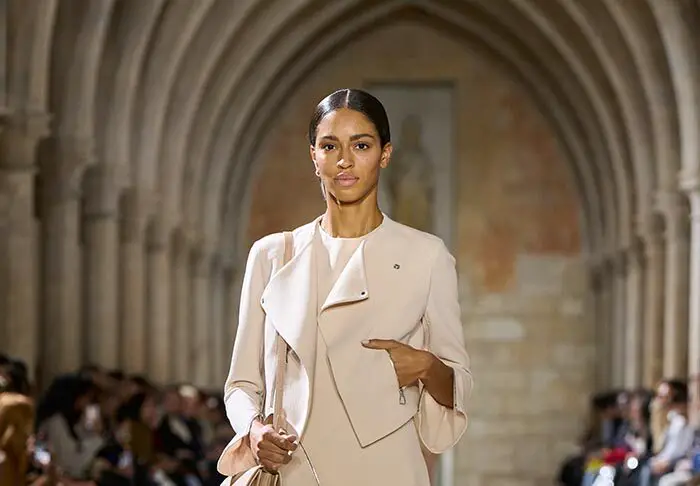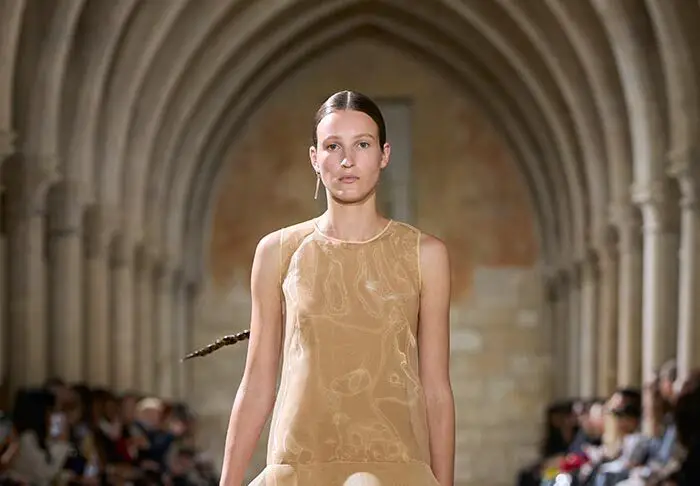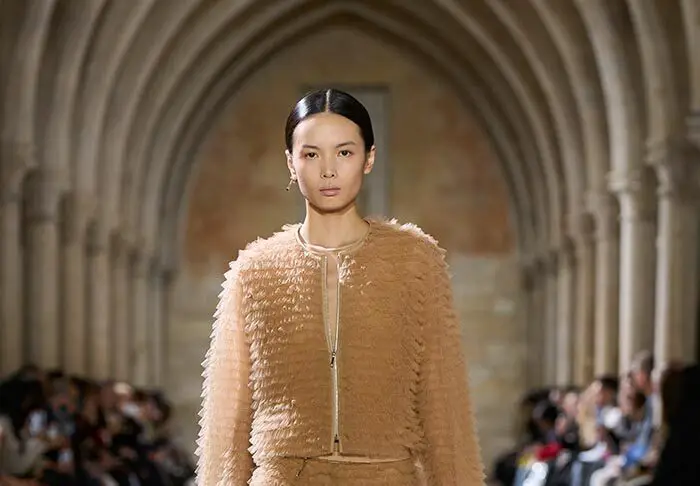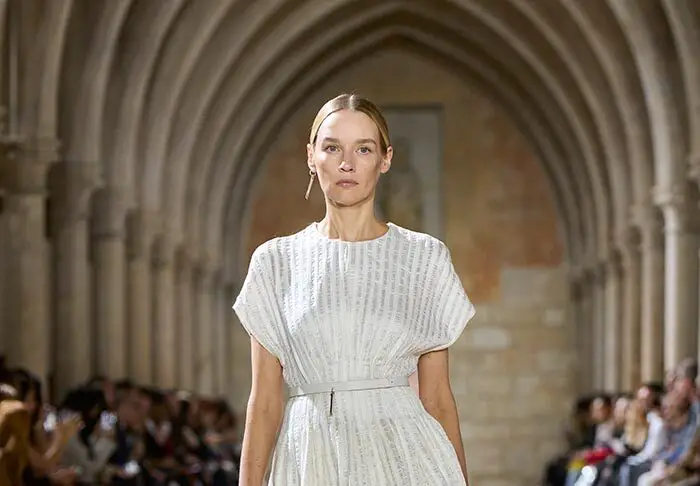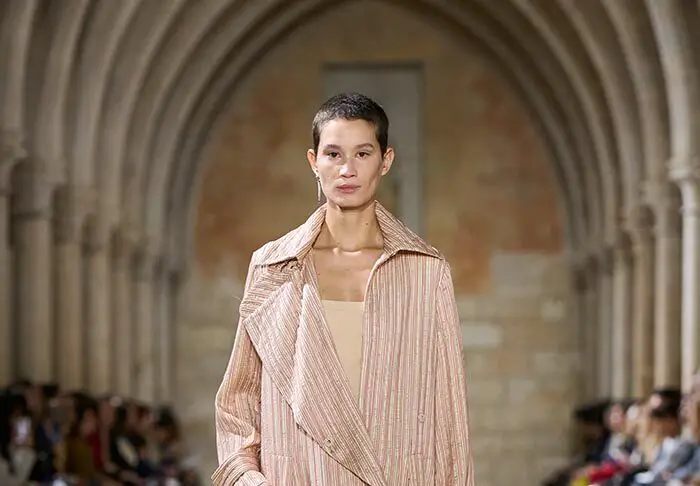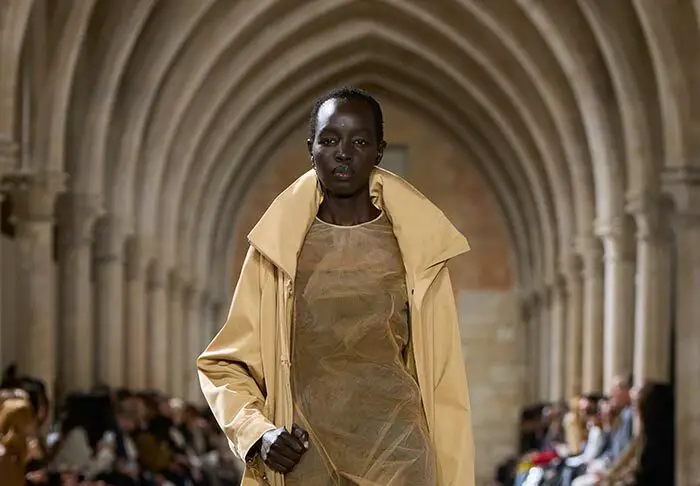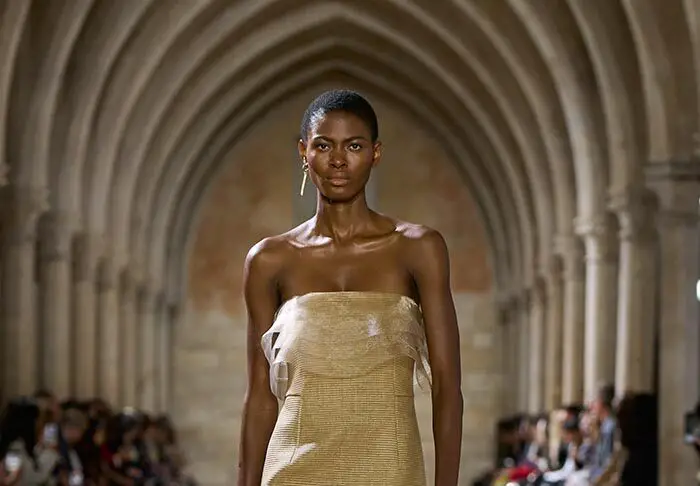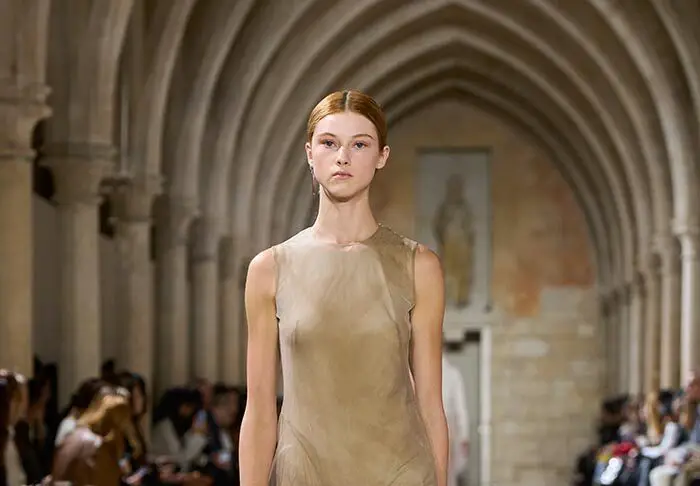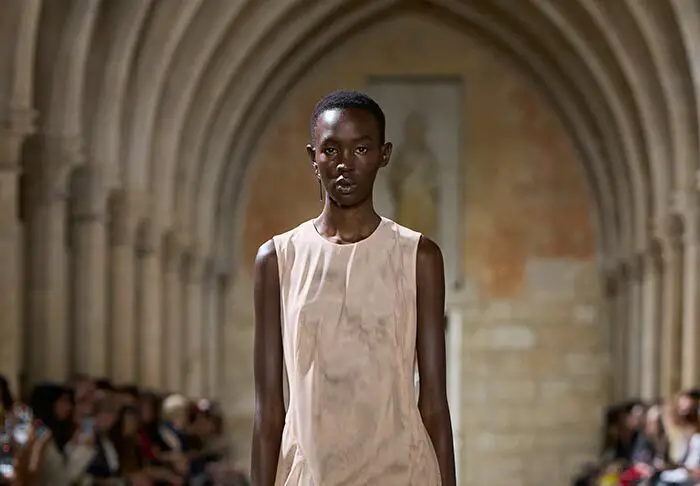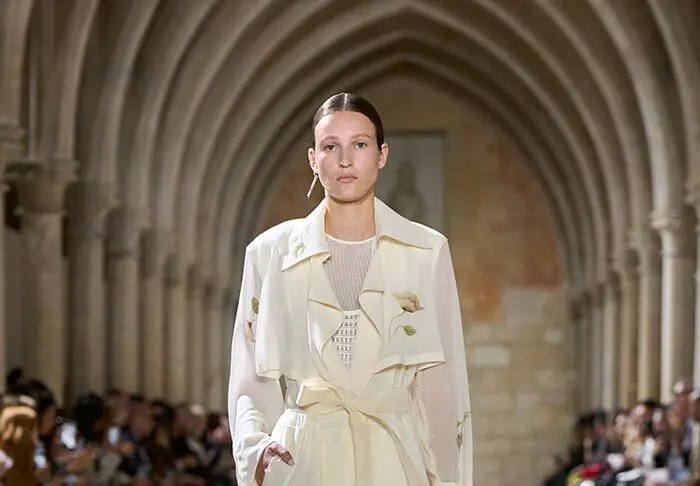A notion of carving shape from cloth. A hatband spiraled and tiered; ribbons as flowing lines or looped for a bubble-hem; tailoring is wrapped and creased; trapezoids emerging from the fabric itself. The poetic work of human hands; the power of craft.
Silk, panama organza, techno grid, and fine gauze cotton knitwear.
A diaphanous nature, evoked by tulle overlays, translucent as layers of paint in a fresco.
Juxtaposing flou and pragmatism. Elongated, fluid dresses grounded in trenches and parkas for a feeling of protection and outdoorsy sleekness. Resin-coated, water-resistant, in fabrics that feel light: linen-blend, cotton, and silk poplin. Sporty ease expressed through double-layered tank tops, with a woman in action always present.
Akris
Raffia, the fabric of the moment, enduring and exclusively formulated for lightness and movement. Its texture, reminiscent of Akris’ signature horsehair fabric, creating the impression of being carved in bas-relief.
The Italian Anemone as an act of spontaneity
The Alice Bag
Structured, lines are simple and pure. The Alice bag carries a rectangular form and curved top-handle. Named after Akris founder Alice KriemlerSchoch, this beacon of modern heritage captures a woman who forged her own path with a confident stride. Crafted in calf leather, featuring a side gusset, detachable shoulder strap, and Akris’ distinctive trapezoid in gold or leather-coated finish.
Camera degli Sposi
The Camera degli Sposi (Camera Picta) in Mantua is a masterpiece of Italian Renaissance fresco painting, created by Andrea Mantegna between 1465 and 1474. Located in the Palazzo Ducale, it was commissioned by Ludovico III Gonzaga, the Marquis of Mantua, with the walls depicting richly detailed scenes of Gonzaga family life.
When I collaborated with choreographer John Neumeier earlier this year on the costumes for his final ballet, Epilogue, the hues of artist Piero della Francesca became our inspiration.
His subdued, sublime colors sparked my fascination with the Early Renaissance and Mantua, Italy, a 15th-century cultural nucleus. It was there that I found myself in a room painted in fresco — full of light and life: Andrea Mantegna’s Camera degli Sposi. Mantegna’s use of light and shade mesmerized me, creating a visual impression of volume and granting his figures a presence that appeared individual and three-dimensional, even real. Giving attention to the carved details — the fold of pleats, the curve of a line — introduced depth to the picture.
Thinking about his work, you do not think about beauty, you think about grace. Grace is not something close to the surface, it comes from inside. It is a gesture, an expression, an emotion. A kind of light, something radiant, and honest.
I wanted to capture this in sheer volumes for a collection in an airy, vaulted space full of luminous light.
##
Learn More
With love,
FWO



